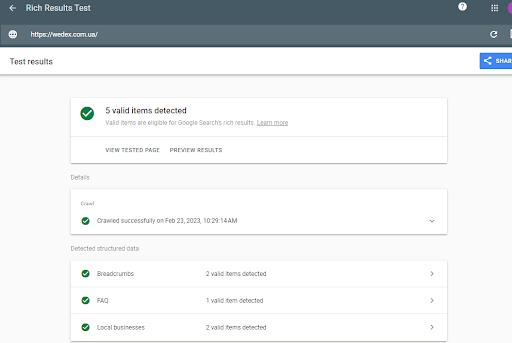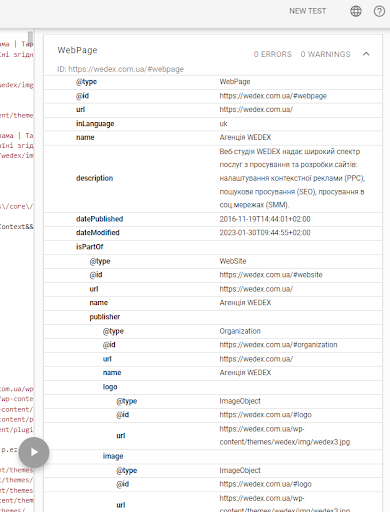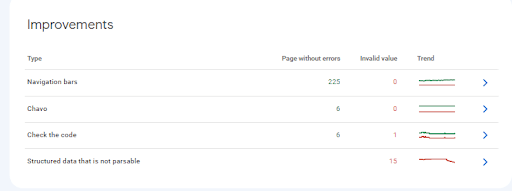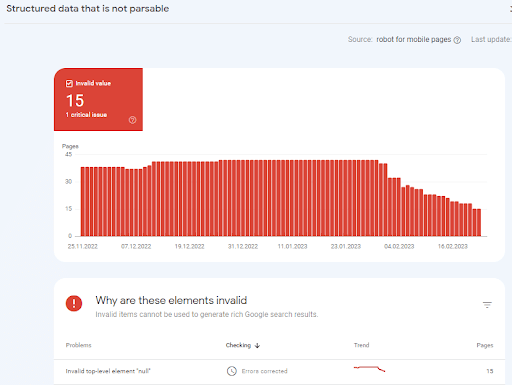Content of the article

What is micro-markup and how can you use it to improve your SEO results? When you have quality content on your site, you won’t want to hide it – we’re sure you’ll want to show it to as many visitors as possible. Attracting traffic to your site through high search engine rankings is an important part of this process.
If people can’t find your site easily enough, they’ll move on. This is where your SEO efforts will be critical. You need to make sure that search engines recognize your content for what it is. You must speak the language in which they are viewing your content (both text and visual).
And in order to speak with it, you should add Schema markup to your site – structured data in the form of code that will help search engines understand your pages and content elements.
What is micromarking, why is it needed?
Micro-markup, also known as structured data, is the language that search engines use to read and understand the content of your pages. By language, we mean a semantic dictionary (code) that helps search engines characterize and classify the content of web pages.
Although search engines are very powerful tools using advanced algorithms, they still need help to read, identify and classify content. Search engines do not have the same visual and intuitive capabilities as humans. They can’t see the picture, they have to read it. If you read the list of ingredients and quantities, you’ll know it’s a recipe, but a search engine won’t. By applying schematic markup to your content, you help search engines understand the essence of your pages.
Structured data is a way to standardize information about a page and categorize its content. Data is created using code, using markup in the code of the page to which the information relates. Schema markup is a standardized format for providing explicit hints about a page and classifying its content.
Micro-markup is code in the form of structured data that conveys the meaning of your page, its elements and how users should see it to a search engine, in a language that a search engine can understand.
Micro-markup also allows search engines to create rich snippets, which usually have a higher conversion rate than “normal” search results. That is, it can give your site more traffic.
How to add micro markup?
Check out schema.org – the markup is a two-level hierarchical system. At the top level there are types, each of which has a set of certain properties.
- Types determine which category a block of content belongs to.
- Properties, in turn, describe the content.
Here list of markup types, with which to start. Click on the most common types to see their properties, learn what they mean, explore possible value options, and more. Markup for rich snippets gives the most impact in the least amount of time, only if your content is already on the first page of the output. In addition, only some types and properties of schemes can help you get advanced snippets. Google provides a list of them and the necessary documentation, but it may turn out that none of the options will suit you. The following are the most common content types for rich snippets:
- Markup for instructions
- Marking for goods
- Markup for reviews
- Markup for applications
- Markup for frequently asked questions
IN articles examples of implementation of the main types of micro-marking are considered.
How to implement micro-markup?
Let’s take a look at how you can implement micro-markup on your site:
- Generate the markup
It is possible to write the micro-markup by hand, but usually it is not necessary. If you’re using WordPress, there are tons of plugins that will make the process easier. If not, there are many markup generators at your service. Widely known generator from Merkle and Schema Builder extension; but there are plenty of options. Note that these generators typically only cover basic markup. If this is not enough for you, you will have to edit the code yourself. All code examples here use the JSON-LD format, which recommended by Google. In addition, it is the easiest to understand and use. However, you’ll often see references to another format called “microdata” because it’s often used by CMS systems and their plugins. There is another valid format – RDFa (an extension of HTML5).
- Test your code first.
Markup should always be tested before implementation, unless you’re using a CMS or plugin that you interact with through a user interface. For this, Google offers two easy-to-use tools: The first is this structured data markup validator.

Google Advanced Results Checker. As the name suggests, it focuses on extended results, which leaves out most of the schema.org vocabulary.

If you’re testing a piece of code or a non-markup page that triggers rich snippets, it won’t show you the markup tree like the first tool does:

Additionally, the Advanced Results Checker shows errors if you’ve used markup types or properties incorrectly:

-
- Embed the code on your site
Code placement varies depending on your site’s settings and tagging system. Here we discuss JSON-LD as the recommended markup format. Consider the following methods of implementation:
Directly in the HTML code
JSON-LD markup is a type of script that is placed in the <head> or <body> section of the HTML code of your page. If you are not a webmaster, contact your company’s developers and let them handle this task.
Using Google Tag Manager
Until recently, implementing micro-markup via GTM was considered a bad option because Googlebot had to render JavaScript to access it. However, Google recently listed implementation via GTM as one of the officially recommended solutions.
This is good for marketers who are used to working with GTM. We recommend using this method only if you already use GTM to manage your marketing technology suite. Add the generated markup as a custom HTML tag and set a trigger based on page view for one or more specific pages.
Using CMS systems and plugins
This is the most common and most accessible way for beginners to add micro-markup. But due to the large number of different CMS systems and plugins, it can cause the greatest difficulties.
There is simply no CMS or plugin that would do all the work for you. If you need a rare micromarking, then you will inevitably have to combine the available options. At the same time, it may also be necessary to make changes to themes and templates or insert code into the page directly or through GTM.
You should only use one universal SEO plugin, such as Yoast, RankMath, or The SEO Framework. Using two or more of these plugins will almost certainly cause problems.
There are many different tools to help you create and test your schema markup. Here are some of them:
Code generators
Validators and testing tools
- Google Search Console Advanced Maps
- Google Advanced Results Tester
- Bing Webmaster Tools Markup Checker
A few plugins for those working with WordPress
How to track micromarking?
In service Google Search Console information about all detected markup is on the Improvements tab:

Click on a specific markup type to view the report:

If you checked the markup before implementing, you shouldn’t have any problems. It is also worth noting that some types of markups have mandatory properties, in the absence of which errors will occur. This usually doesn’t matter much, so don’t worry too much about errors and don’t make fixing them a priority.
Conclusion
Deciding to use schematic markup in your content can’t hurt you, it just helps search engines generate more relevant quick answers for their users. Only ⅓ of websites apply markup to their content, so there’s plenty of room for improvement in helping search engines understand the meaning of your pages.
The benefit you get from schema markup, in terms of size and display of advanced results, can help you get more attention and traffic to your pages.
In addition, with the latest developments in voice search and “conversational” rendering from Google, we can definitely expect an increase in the technological progress of these options. So, as they say, it’s better to be ready than late.







 10/04/2023
10/04/2023  2570
2570


